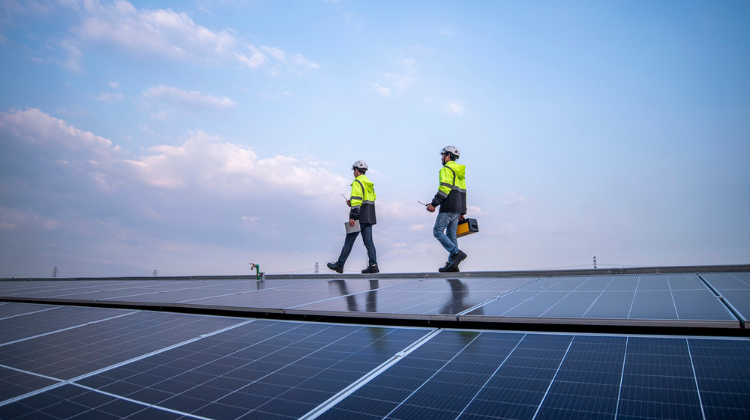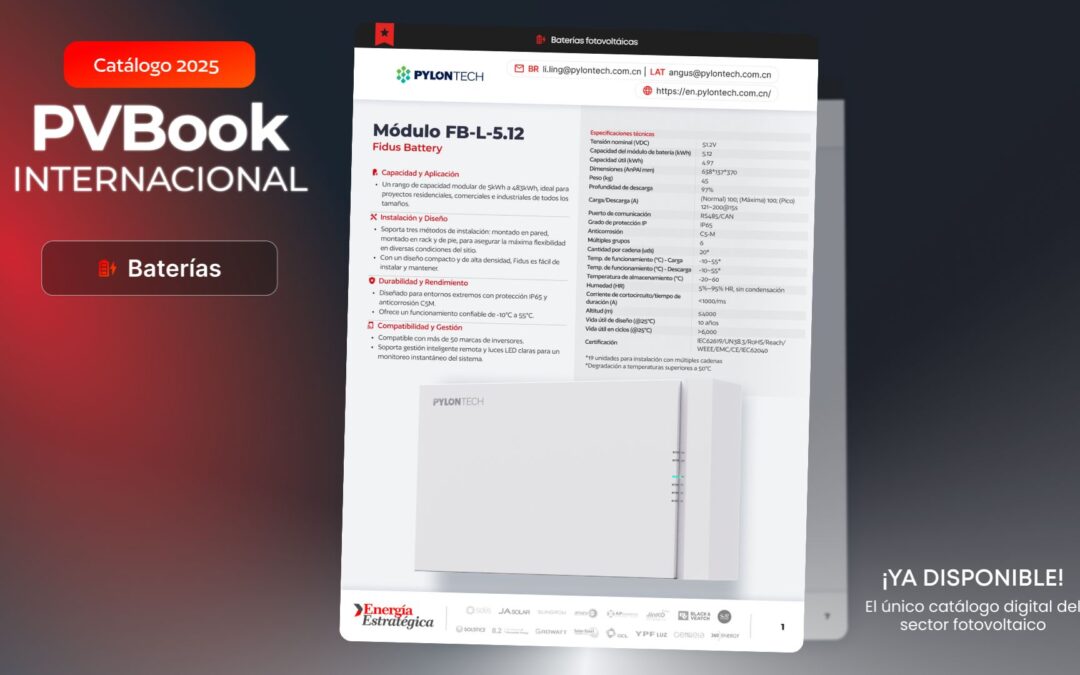The Ministry for Ecological Transition and the Demographic Challenge (MITECO) has opened the public consultation on the draft Royal Decree updating the regime for self-consumption and distributed storage.
The draft introduces regulatory and technical adjustments aimed at consolidating the sector’s growth, simplifying administrative procedures, and establishing an operational framework to integrate new collective modalities and behind-the-meter storage systems.
Among the most notable modifications, the document extends the maximum proximity radius for collective self-consumption from 2 to 5 kilometres, limited to installations of up to 5 MW and exclusively of photovoltaic technology.
This extension multiplies by six the potential participation of consumers in urban and industrial environments—particularly in business parks and industrial estates—a demand long voiced by the sector, despite the previous update that had already expanded the limit from 1 to 2 kilometres.
The draft also introduces the new figure of the self-consumption manager, who will be able to represent all participants before the distribution and retail companies.
This role seeks to reduce administrative burden in collective projects by streamlining registrations, adjustments of sharing coefficients, and modification procedures.
Jon Macías Santiago, president of the Self-Consumption Division at APPA Renovables, noted that this professional figure will facilitate the management of energy communities and collective projects, allowing a specialised person or entity to liaise directly with distribution and retail companies, thereby reducing errors and processing delays.
Additionally, the decree reduces the minimum permanence of collective self-consumption agreements from four months to one month, and establishes that only the consumers affected must sign changes to the distribution coefficients. This modification could foster greater mobility and flexibility, allowing participants to join or leave more dynamically, though it also poses the challenge of ensuring efficient and transparent management by self-consumption managers.
In this regard, artificial intelligence tools may play a central role in the technical and operational management of installations. Speaking with Strategic Energy Europe, Macías explained that AI will enable the anticipation of consumption patterns, optimisation of energy distribution, and automation of repetitive processes, reducing the manual workload of managers.
He also highlighted that, in the near future, such algorithms could help improve demand forecasting and the balance between generation and consumption in real time—especially in grids with high penetration of self-consumption and storage.
Regarding administrative procedures, the draft foresees a more agile process: self-consumption activation may take place within five working days after the distributor receives the request, and the access contract must be formalised within ten days, significantly shortening current timelines.
Boost to distributed storage
For the first time, the regulation explicitly incorporates behind-the-meter storage as an integral component of self-consumption. Batteries installed at the point of supply will be exempt from paying tolls and charges for energy fed into the grid within the same billing cycle. This measure anticipates the future implementation of dedicated metering systems and paves the way for the integration of bidirectional electric mobility (V2G).
The Royal Decree also lays the groundwork for a distributed flexibility model, in which storage will play a key role in grid management and participation in demand response mechanisms, aligned with the goals of the National Energy and Climate Plan (PNIEC).
Areas with the greatest potential for collective self-consumption
Various reports from IDAE, APPA Renovables, and MITECO precisely identify the regions of Spain with the highest potential for collective self-consumption projects.
The industrial corridors of the Henares Valley and southern metropolitan Madrid, along with the business parks of Vallès and Baix Llobregat in Catalonia, stand out as high-viability areas due to their dense energy demand and the availability of extensive rooftop space.
Along the Mediterranean corridor, Valencia and its metropolitan area are particularly relevant, as municipal solar maps indicate that over 30% of local electricity demand could be covered by local generation. The city’s Solar Map estimates that rooftop photovoltaic generation could supply around 32% of Valencia’s electricity demand, with an optimal installable capacity of approximately 789 MWp, according to the local council (valencia.es). Academic analyses such as the Catenerg project from the Universitat Politècnica de València estimate a technical potential of around 640.8 MW for residential rooftops, considering shading, orientation, and usable area (catenerg.webs.upv.es).
The industrial zones of Zaragoza and Málaga also stand out, supported by regional programmes for energy communities. Peri-urban areas of Andalusia and Aragon combine high solar irradiation with space availability and a strong industrial base, while the Balearic and Canary Islands are designated as priority territories under MITECO’s Self-Consumption Roadmap due to their energy dependency and need for enhanced self-sufficiency.
In Madrid, the IDAE study on photovoltaic potential with storage estimates a feasible rooftop capacity of around 0.28 GW (280 MW). Together with the capital, Barcelona and Valencia account for the largest number of rooftops with technical potential for residential collective self-consumption, according to IDAE’s solar viewer and municipal geoportals.
Continuities and reinforcements
The draft maintains the principles of technical simplicity for small installations, preserving the regime of negligible auxiliary services for systems under 100 kW whose auxiliary energy does not exceed 1% of net consumption.
It also strengthens consumer information obligations, ensuring access to generation and distribution data through the same platforms used for monitoring consumption, and adding further details to electricity bills.
Additionally, the text establishes the creation of a Self-Consumption Panel, managed by the system operator, aimed at compiling representative data on distributed generation. This tool will improve grid planning and demand forecasting in a scenario of high self-consumption penetration.
Next steps
MITECO has opened the public consultation period for receiving comments from companies, associations, and individuals, with the submission window running from Wednesday 8 to Friday 24 October 2025.
According to the president of the self-consumption division at APPA Renovables, no major objections are expected, as the document has been jointly developed with the sector. The final approval is expected in the last quarter of 2025, paving the way for a balanced and consensual operational framework.
Subsequently, the CNMC and Red Eléctrica will have up to three months to adapt operational procedures and data exchange formats.
With this proposal, the Government aims to consolidate the expansion of self-consumption in Spain, which already exceeds 8 GW of installed capacity and is projected to reach 19 GW by 2030.
Proyecto de Real Decreto de modificación del autoconsumo y almacenamiento distribuido (1)





























